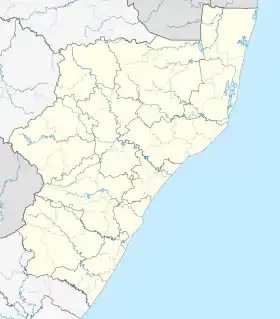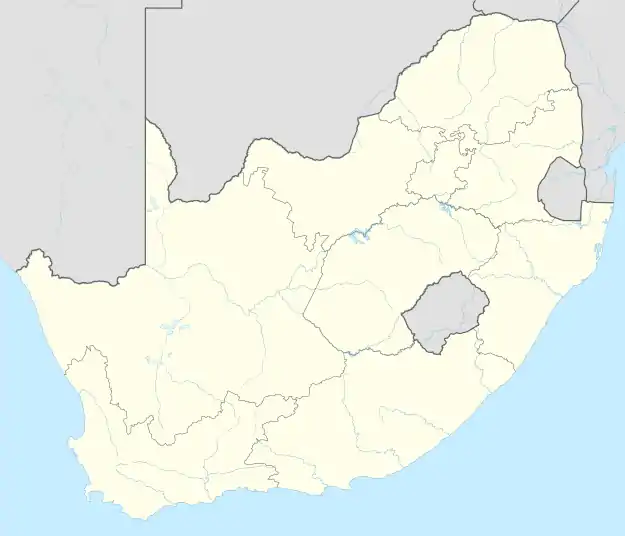Felixton | |
|---|---|
 Felixton  Felixton | |
| Coordinates: 28°49′52″S 31°53′38″E / 28.831°S 31.894°E | |
| Country | South Africa |
| Province | KwaZulu-Natal |
| District | King Cetshwayo |
| Municipality | uMhlathuze |
| Main Place | Empangeni |
| Area | |
| • Total | 2.38 km2 (0.92 sq mi) |
| Population (2011)[1] | |
| • Total | 1,023 |
| • Density | 430/km2 (1,100/sq mi) |
| Racial makeup (2011) | |
| • Black African | 66.7% |
| • Coloured | 1.2% |
| • Indian/Asian | 11.4% |
| • White | 20.5% |
| • Other | 0.1% |
| First languages (2011) | |
| • Zulu | 52.5% |
| • English | 31.7% |
| • Afrikaans | 8.3% |
| • Swazi | 1.4% |
| • Other | 6.1% |
| Time zone | UTC+2 (SAST) |
| PO box | 3875 |
Felixton is a town in King Cetshwayo District Municipality in the KwaZulu-Natal province of South Africa.
Village 10 km south-east of Empangeni, first settled in 1907. Said to have been named either after Viscount Herbert John Gladstone, nicknamed Felix, or after a local pioneer, Felix Piccione.[2] The local sugar mill is one of the largest in country.
Sources
- Erasmus, B.P.J.: Op Pad in Suid-Afrika. 1995. ISBN 1-86842-026-4
- Rosenthal, Eric: 'Ensiklopedie van Suidelike Afrika. 1967
References
- 1 2 3 4 "Sub Place Felixton". Census 2011.
- ↑ "Dictionary of Southern African Place Names (Public Domain)". Human Science Research Council. p. 162.
This article is issued from Wikipedia. The text is licensed under Creative Commons - Attribution - Sharealike. Additional terms may apply for the media files.
.svg.png.webp)